The Learning Zone
Libby Lockwood
Assistant Principal & Leader of Pedagogy

The Learning Zone
Libby Lockwood
Assistant Principal & Leader of Pedagogy
So... which planet in our Solar System is known for its 'Great Red Spot', a giant, long lasting storm that is larger than Earth? What is Pope Leo XIV's real name and where was he born? Italian teenager Carlo Acutis is the world's first what? Did you need to google the answers? Well, our Bain Olympia team couldn't!
Tristan, Elliot, Ayva, Miles, Chaise, Ricky-Jay, Lachlan R and Peter had to use every brain cell to answer questions like these and harder as they competed in the Brain Olympia final in Gunnedah on Wednesday the 10th of September 2025.
The students competed in trivia quizzes relating to English, Current Affairs, History/ Geography, Science and Famous People and Places.
The teams then went on to a problem solving section involving challenging Mathematical concepts before writing a speech about our Favourite Fictional World, capably delivered solo by Elliot as our public speaker. The final section of the day was Drama, for which our team created a play based on the topic 'The Time Traveller's Mix-Up' which was a joy to watch.
It was a wonderful, yet challenging, experience and our students represented St Mary of the Angels with pride. We must thank St. Joseph's Glen Innes for providing the bus to transport our team to Gunnedah and our school for the snacks on our return journey. Congratulations to our students for their fine efforts, and to Barraba, the winner of the small schools competition.
A huge thank you to Mrs Grills for attending this day with our students.
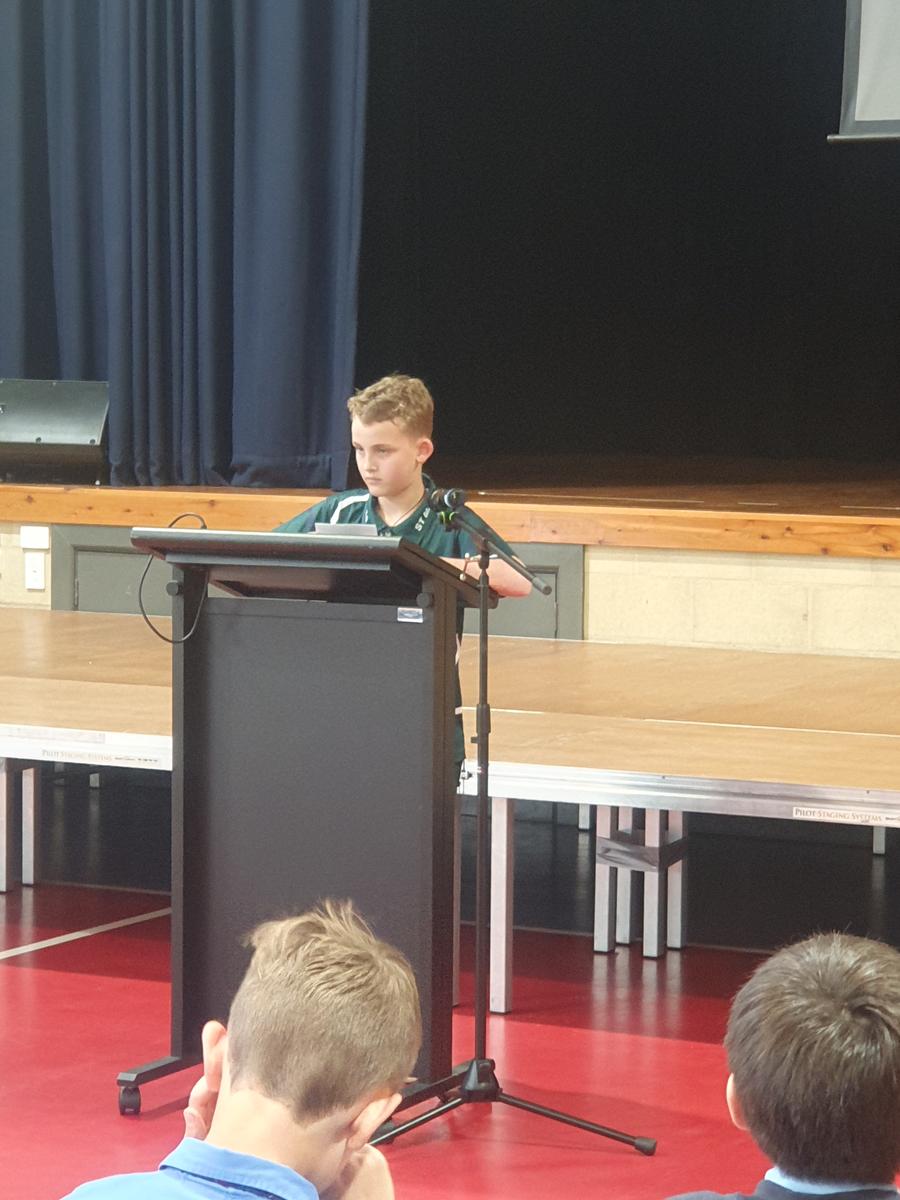
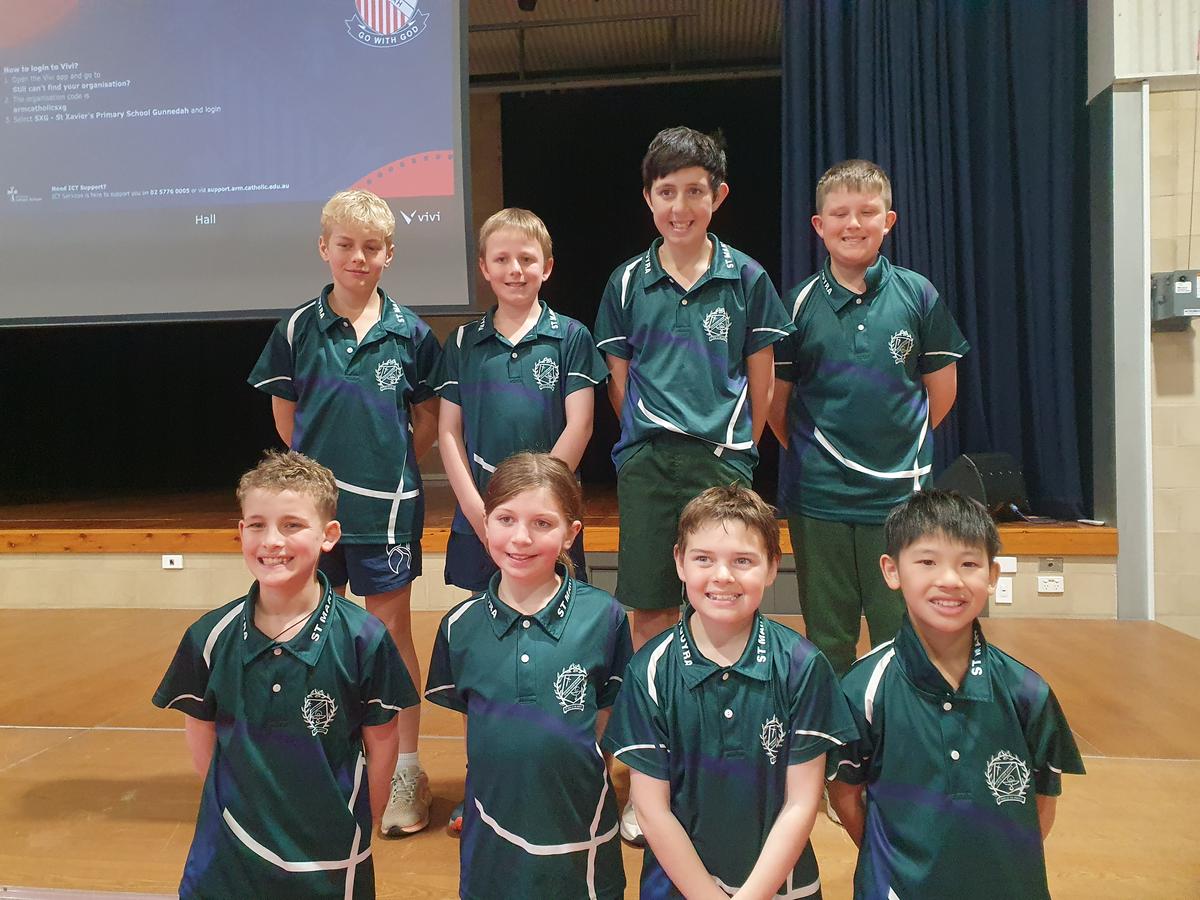
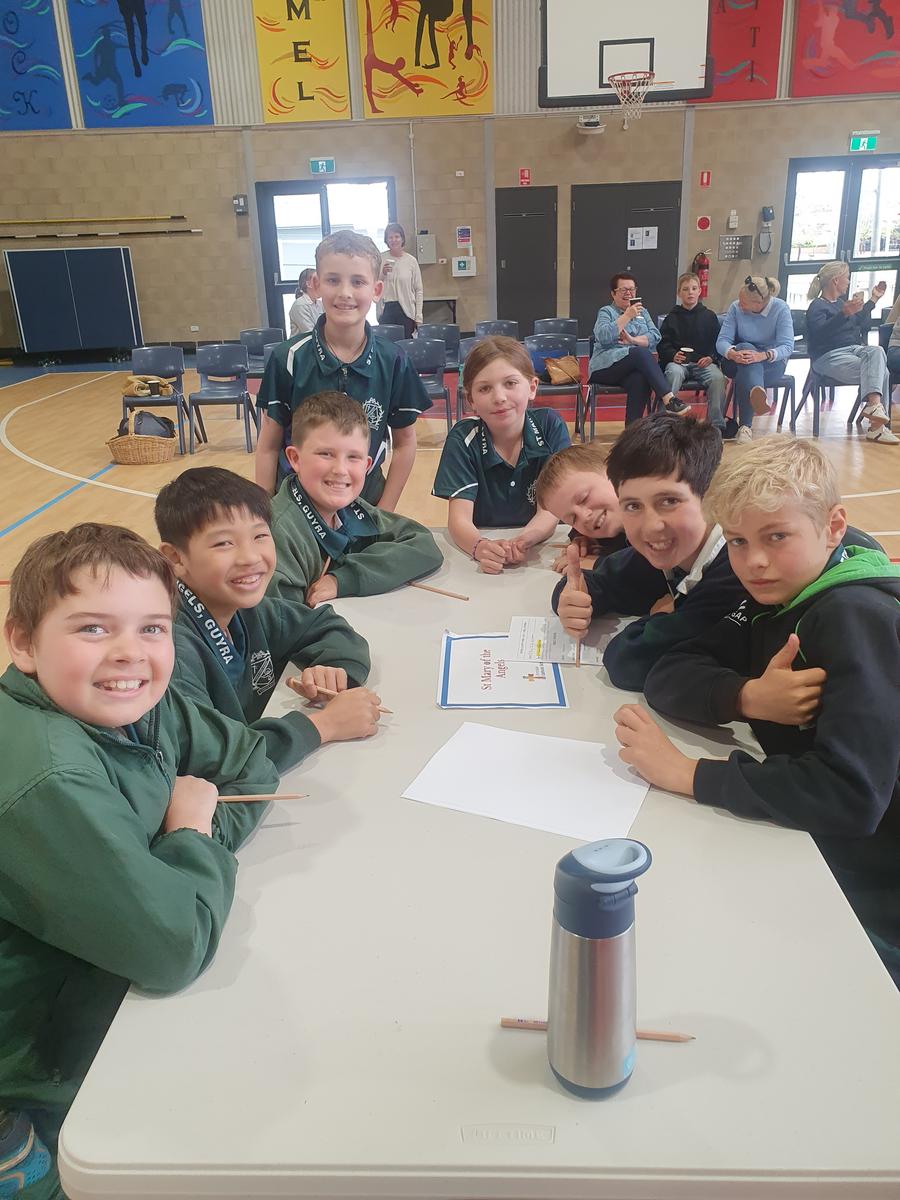



As part of our Book Week celebrations on Friday 5th September 2025, some of our Stage 2 and Stage 3 helpers shared stories with our Transitions students. Thank you to Mackenna, Ayva, Elinor, Sam, Kayden, Charlie P, Vancara and Miles who spent some time leading the reading activity.
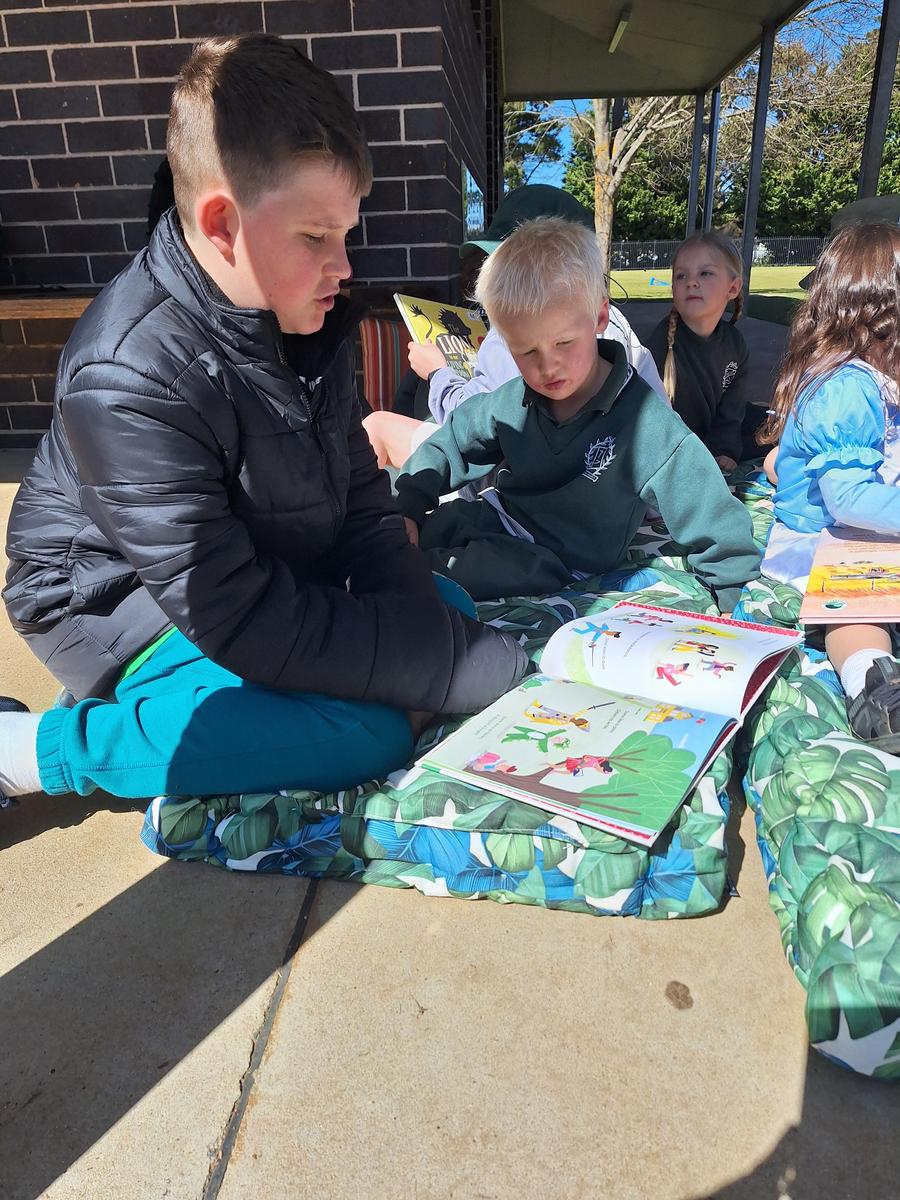
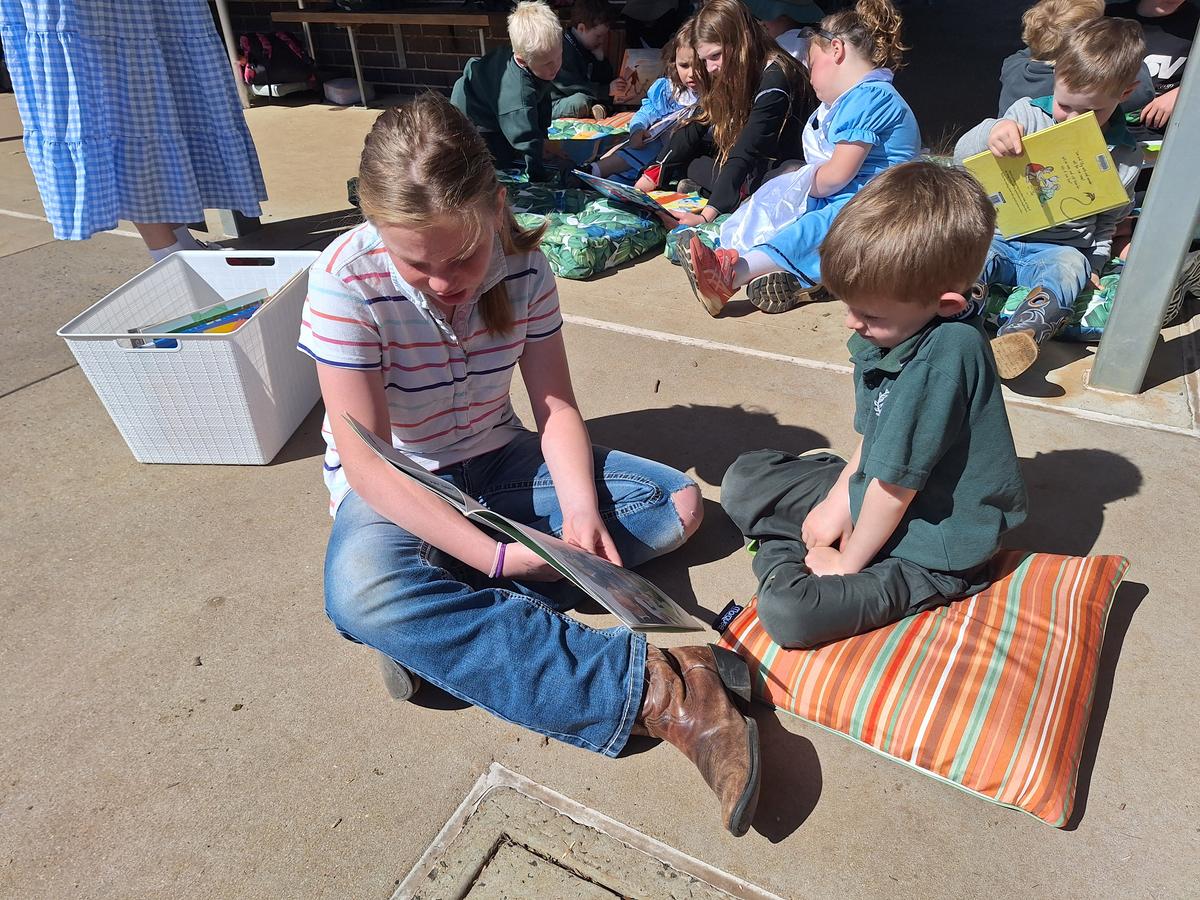
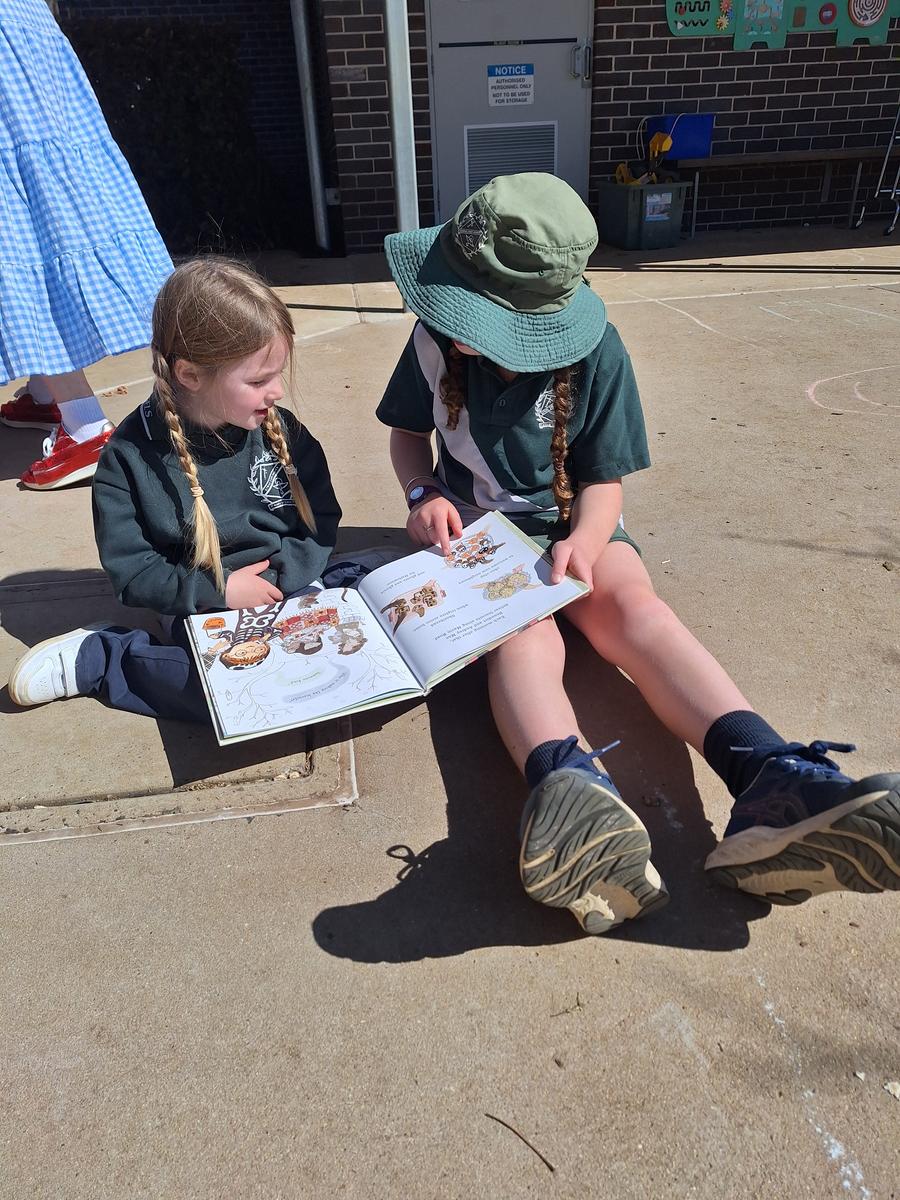
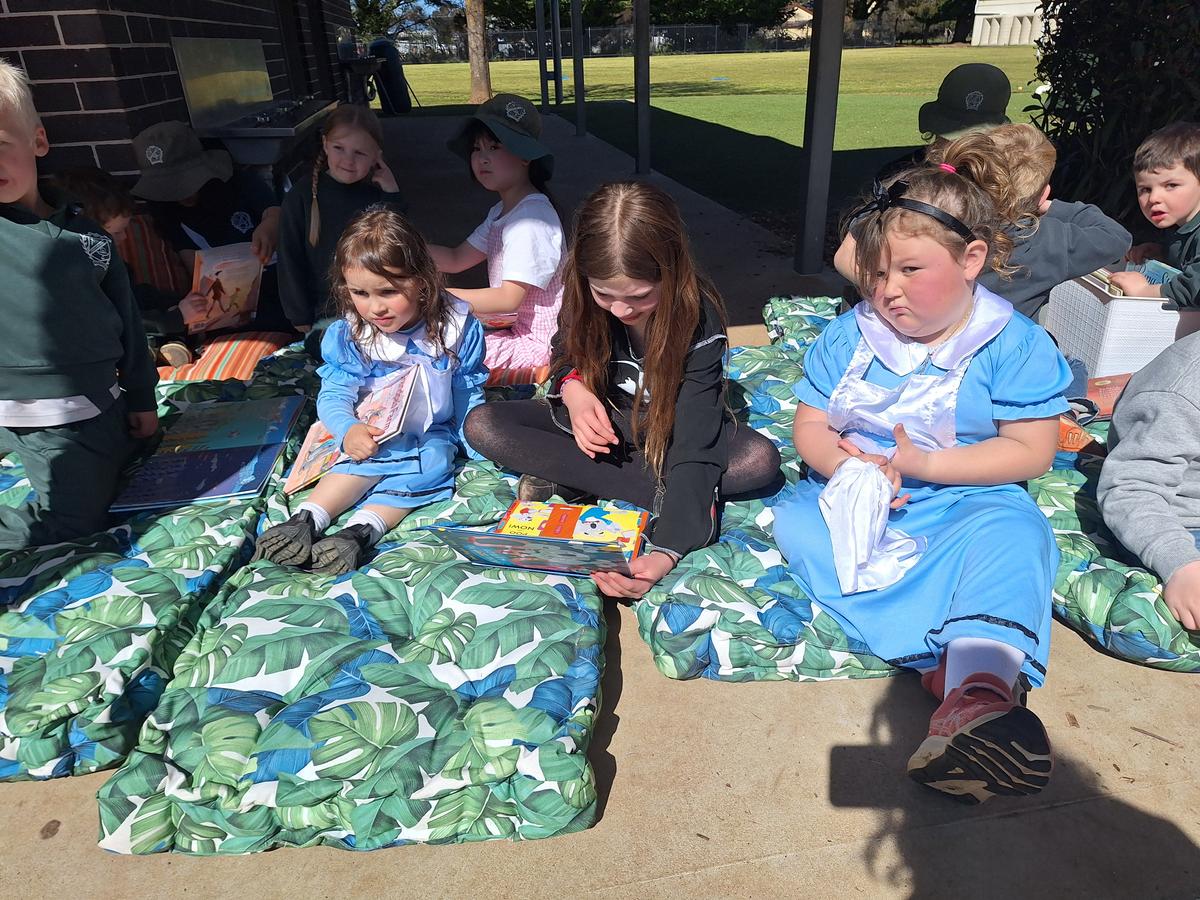




Early Stage 1 - Subtraction - Weeks 8 - 10
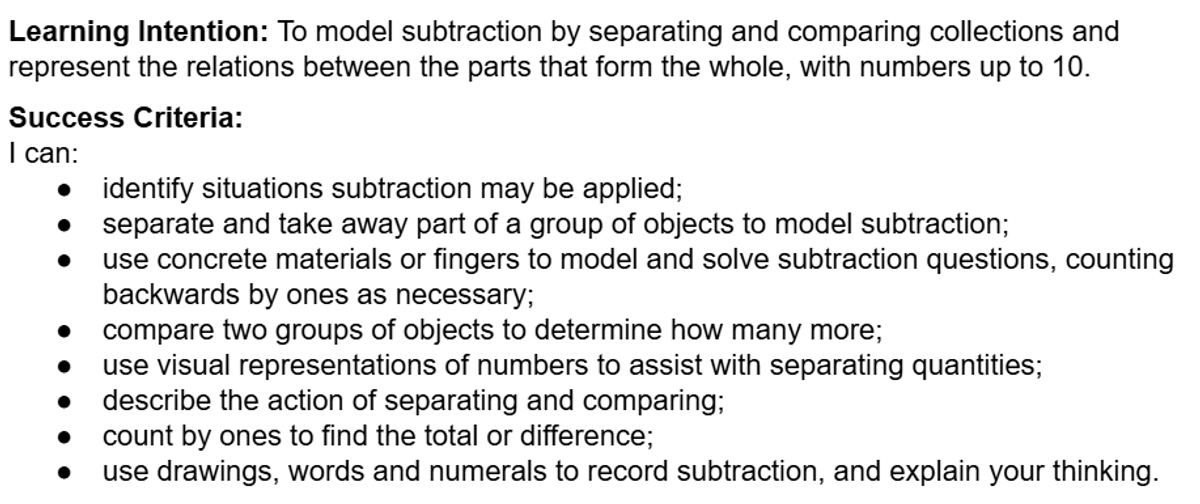

Tips for Parents:
Play Snakes & Ladders or a game of skittles!
Play a pirate treasure hunt game where you start with 10 objects and the Kraken hides some away. Keep the left overs in a box so the pirate can work out how many items have been hidden. Then go on the treasure hunt to find all the missing items! Take turns being the pirate and the Kraken. This game could be a princess and a goblin or any other characters your child likes!
Count backwards together taking turns to say the next number. Play a guessing game. Say, ‘I’m thinking of a number. Here’s a clue: it’s the number before 5.’ Or, ‘I’m thinking of a number. Here’s a clue: it’s the number before 21.’
Draw a noughts and crosses grid and place a number in the middle. See if you can figure which numbers would go above, below, and either side of the number in the middle. The answers are (in clockwise direction from the top) 10 less than, 1 more than, 10 more than, 1 less than. Use a 100s chart to help you.
When you’re at the shops, ask your child to count the number of items in the basket. Ask questions like, ‘How many will there be if we put back 1 item? After we put 5 items on the counter, how many will be left?’
Play skittles! Write down the number of pins you start with, and take away the number you knock down. At the end, add your scores.
Stage 1 - Non-Spatial Measure (Time) - Weeks 9 - 10






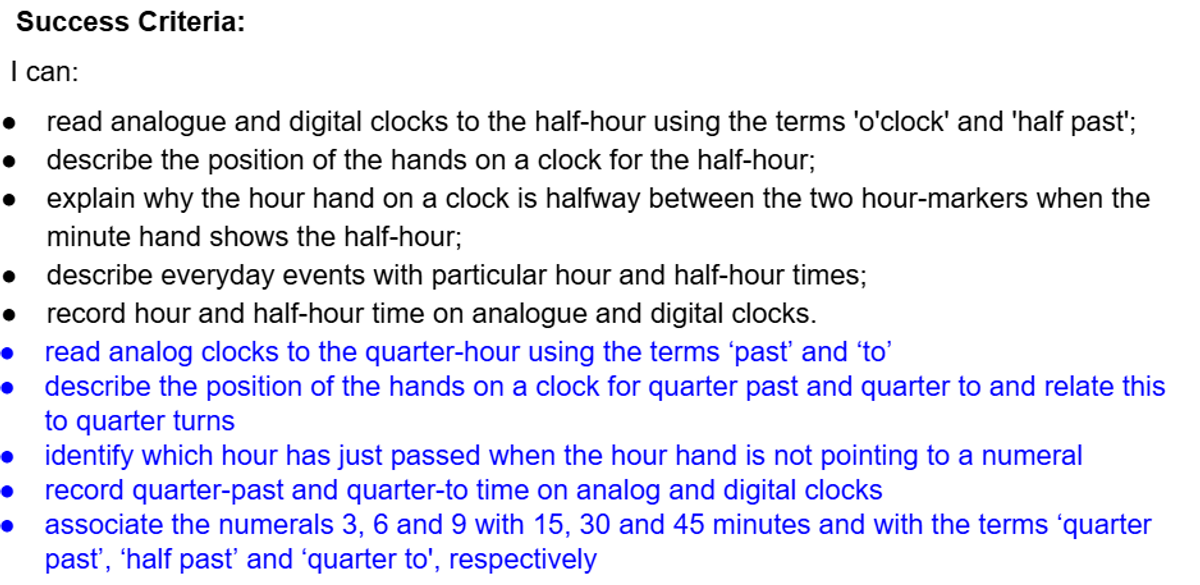

Tips for parents:
Before a child can tell time, they need to understand the basics of what goes into telling time. Follow the below processes to ensure your child has the foundational knowledge to read a clock:
Practice Counting to 60: Before they can run, they have to walk. Similarly, before they can tell time, they have to know all their numbers up until 60, comfortably. Help them learn by having them read the numbers from a chart, write them, and recite them from memory.
Practice Counting by Fives: Once your child has learned to count to 60, teach them to count to 60 by fives. Your child will have mastered this when they can recite and write from 0-60, from memory.
Introduce Your Child to the Concept of Time: Time is actually quite a radical process (one that took humans a few thousand years to understand and record). Start by introducing your child to the concepts of morning, noon, evening, and night time. Then, ask your child when certain routine activities happen. (i.e. "When do we eat breakfast?" or "What do we do in the morning?").Once your child can understand these divisions of the day, they're on track to understanding time!
Make a Model Clock Together: Pick up a paper plate, and enthusiastically tell your child "Today we're making our own clocks!" Keep an analog clock next to you, to use for reference. There are many websites available with free lesson plans on how to do this at home. Be sure to focus on the important markers (12, 3, 6, 9), as well as the Hour Hand and Minute Hand during construction. Connect Time to Their Daily Routine: As your child continues to learn about time, keep connecting time with their daily routines -- but now go more advanced. For example, ask them what time school ends. Then, ask them to show you the corresponding time on the model clock. Try doing this a few times every day (with different examples).
Talk about events in terms of time. For example, It’s going to take about three minutes to cook this, so you might have time to butter some bread.
Look for different kinds of clocks and watches in the house. Ask your child if they are analogue or digital.
Have your child help you set a kitchen timer or an alarm clock.
Record special events on a calendar and talk about how many days or weeks before the event.
Watch athletics and swimming events and talk about the times the athletes are achieving in the events. • Locate the “use by” dates on groceries and discuss how many days left before the item should be used.
Have your child help you read bus and train timetables when using public transport or read the arrivals and departures board if at the airport.
Look at parking signs and discuss the time restrictions when parking the car.
Have your child help you put the correct money in parking meters and talk about the amount of time before the meter runs out.
You can help your Year 1 and Year 2 child at home by:
Using hefting (holding 2 items in each hand and lifting to test the weight) to order a variety of household items from lightest to heaviest. For example, a mug, a book, a metal spoon and an apple. Check this order by using kitchen arm balance scales
Discussing important family dates by using a standard calendar to illustrate when these events will occur. Calculate how long until these events happen, for example, It’s 5 days until your sister’s birthday, It’s 2 weeks and 3 days until school holidays or It’s 4 months and 2 days to Christmas
Using both analog and digital clocks around the house to understand how to read half past the hour, quarter past the hour and quarter to the hour time
Using the time measures of hour, minute and second in everyday life. For example, It’s 1 hour before bedtime, The food will go into the microwave for 30 seconds or Brush your teeth for 2 minutes – that means counting to 60 twice.
Stage 2 - Data - Weeks 9 - 10
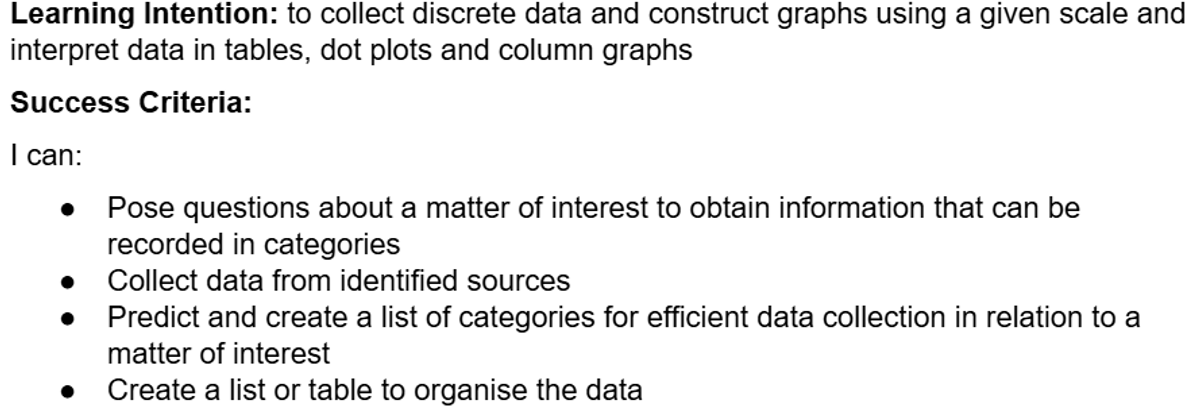

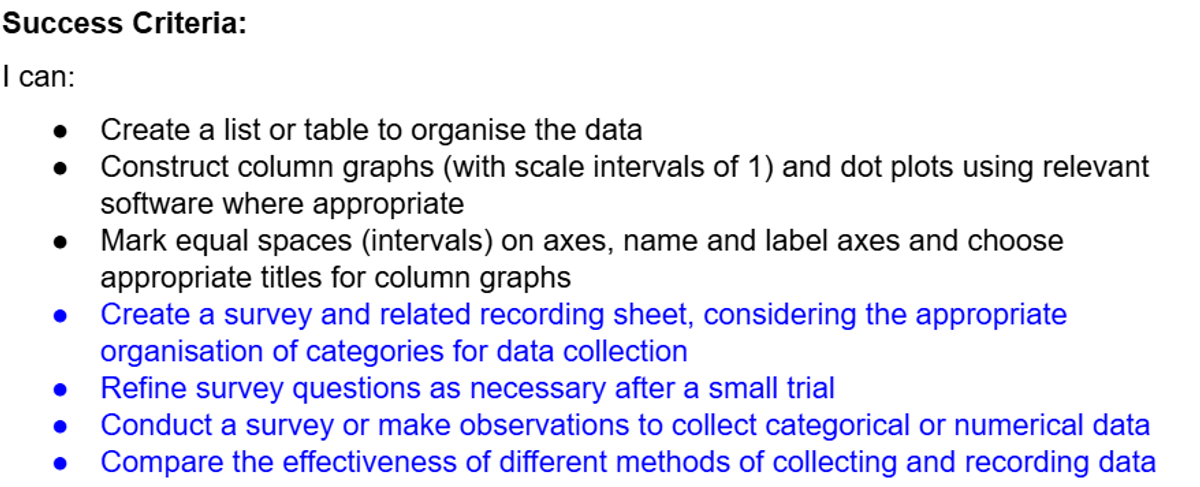

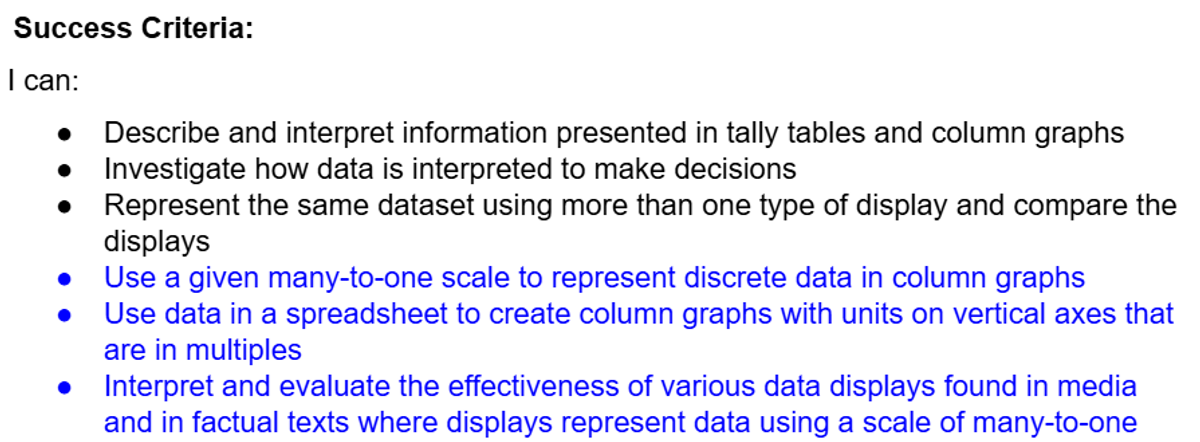

Tips for parents:
Link to the NSW Government Website - Education for tips for parents.
Stage 3 - Geometric Measure (Angles) - Weeks 9 - 10
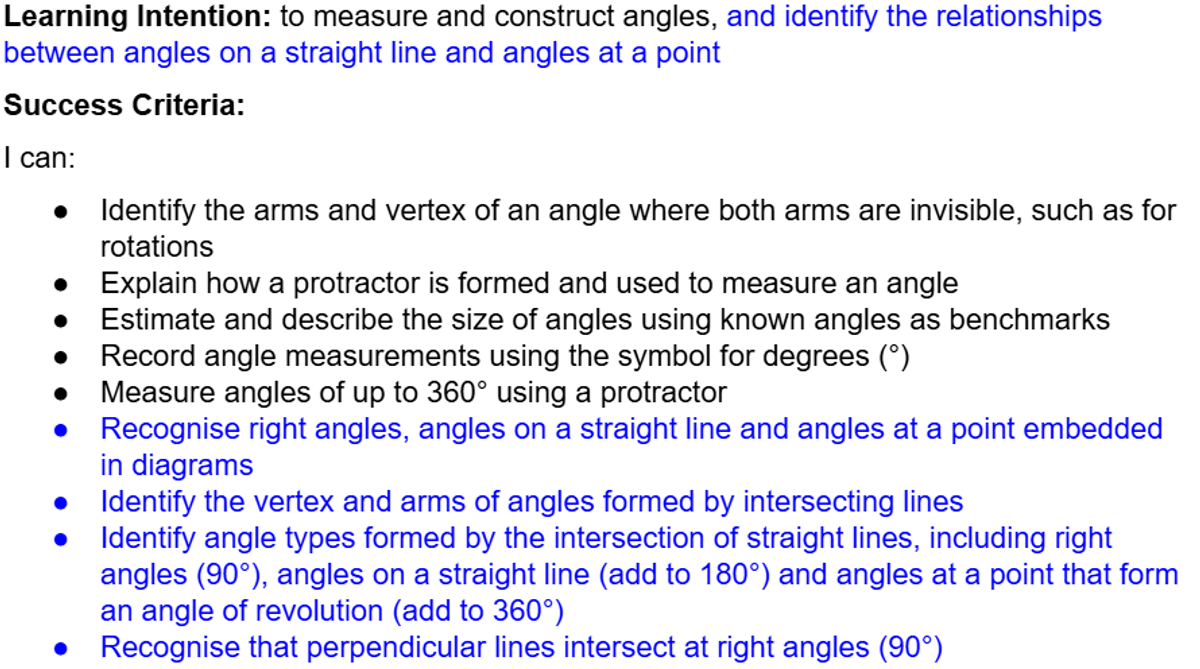

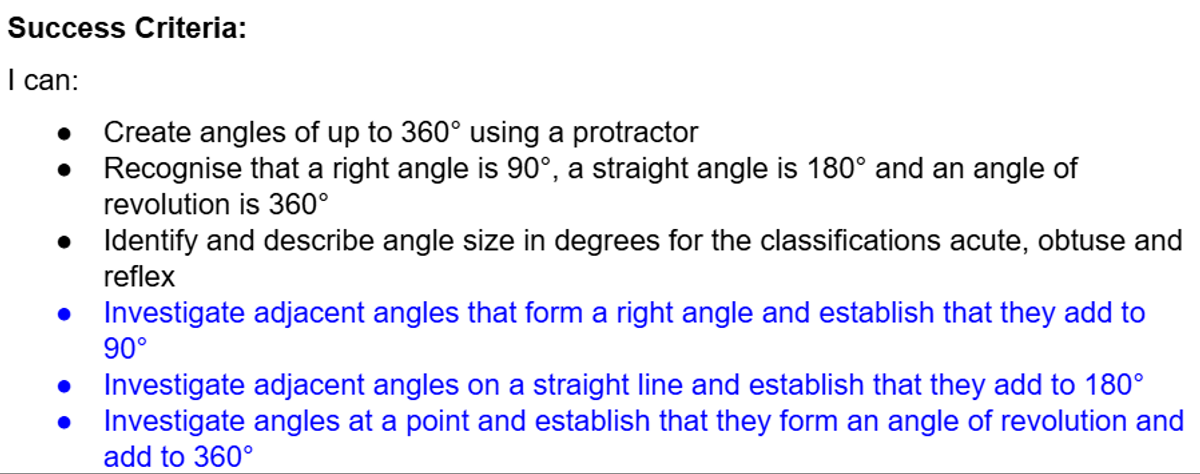

Tips for parents:
Use Everyday Examples: Incorporate angles into everyday situations. For example, discuss the angles formed by the hands of a clock, the corners of a book, or the intersection of roads.
Visual Aids: Utilize visual aids such as pictures, diagrams, and physical objects to help children visualize angles. You can use drawing tools like protractors to show different types of angles.
Real-world Applications: Connect angles to real-world applications. Discuss how angles are used in construction, design, and other fields. This can help children see the relevance of angles in everyday life.
Body Movements: Encourage children to use their bodies to create angles. For instance, they can form acute angles with their arms or demonstrate a right angle with their legs. This hands-on approach can enhance understanding.
Comparisons: Teach children to compare angles. Discuss terms like acute (smaller than 90 degrees), right angle (exactly 90 degrees), and obtuse (greater than 90 degrees, but less than 180 degrees). Help them identify these angles in various contexts.
There has been some alternations made to the days that our young people attend Library. Please see the changes below to ensure that bags are brought for borrowing on these days.
Monday - Stage 3
Tuesday - Stage 2
Wednesday - Early Stage 1 and Stage 1